While sure, the headline is a bit melodramatic, while doing some research the other night, I came across an article that was written by Eric Bandholz, the founder of Beardbrand. In it, Mr. Bandholz said the following:
We’ve experienced in 2023 a drop in sales the likes I’ve never seen.
https://www.practicalecommerce.com/beardbrand-rebirths-after-a-tough-year
This one-liner was an eye-opener for me.
Did men just stop caring for their beards overnight and I didn’t even notice?
If so, why?
Was it a cultural shift?
Or perhaps it was related to mask-wearing mandates due to the COVID-19 pandemic?
Here’s what I found out:
Beard Trends
I love Google Trends! While I normally get lost in its vast data banks distracted by looking to see if there is any correlation between Kim Kardashian and the Solar Cycle, in this instance, I used it to gain some insight into the popularity of beards.
What particular caught my eye was the graph for beard oil:
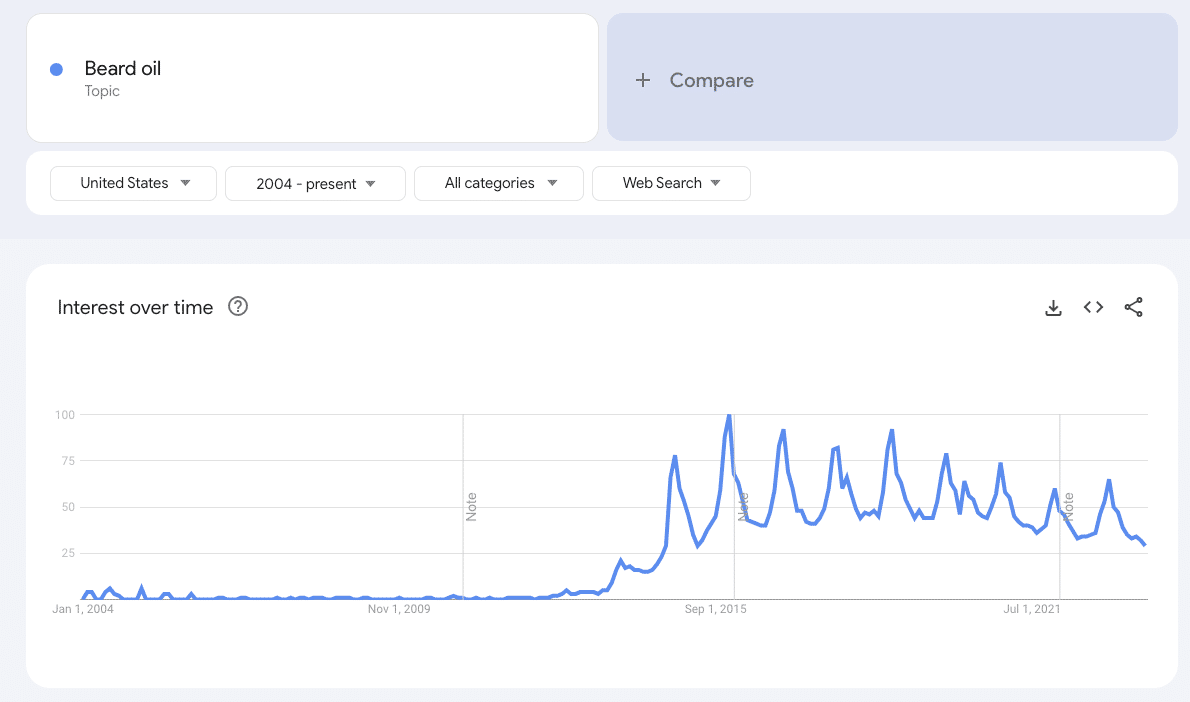
As you can see, 2015 was truly peak beard, and since then we’ve seen a gradual decline in interest ever since. However, it’s interesting to note that despite the general downtrend there have been peaks around the holiday season each year, most likely due to gift-giving.
Interestingly, beard care has seen an identical downward trend:
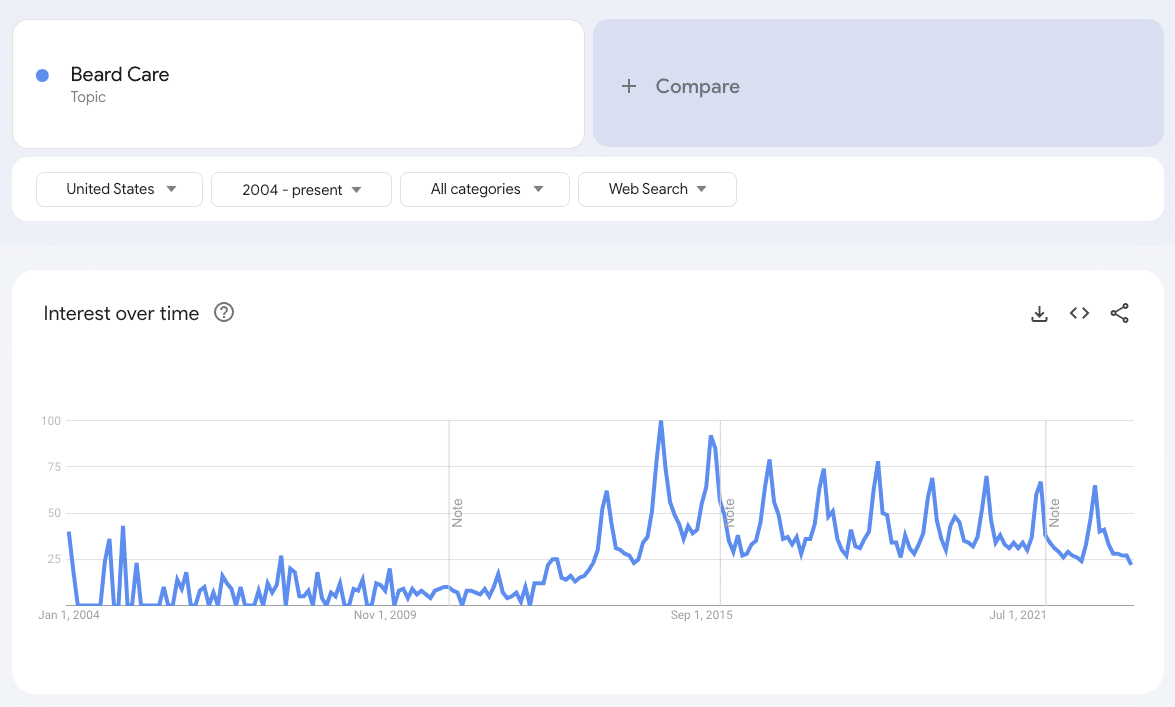
The 2015 peak again is evident, as is the holiday surge each year. But each peak seems to be less and less, suggesting a continuous decline in the popularity of beard care.
So while COVID didn’t necessarily kill it (in fact if you notice on the beard oil chart, there is a slight spike in April of 2020), it sure didn’t help revive it as many would have assumed with a new stay-at-home lifestyle and more time for grooming hobbies.
Aside from product-specific searches, the beard topic as a whole, which includes everything from beard products to beard styles, care, and heck, even James Harden (as he is commonly referred to as ‘The Beard’), as you can see, the graph is even more telling. While it doesn’t follow the same trajectory as the previous charts – it was shifted to 2018 and within the past year or two, has experienced what appears to be a more rapid downfall ever since:
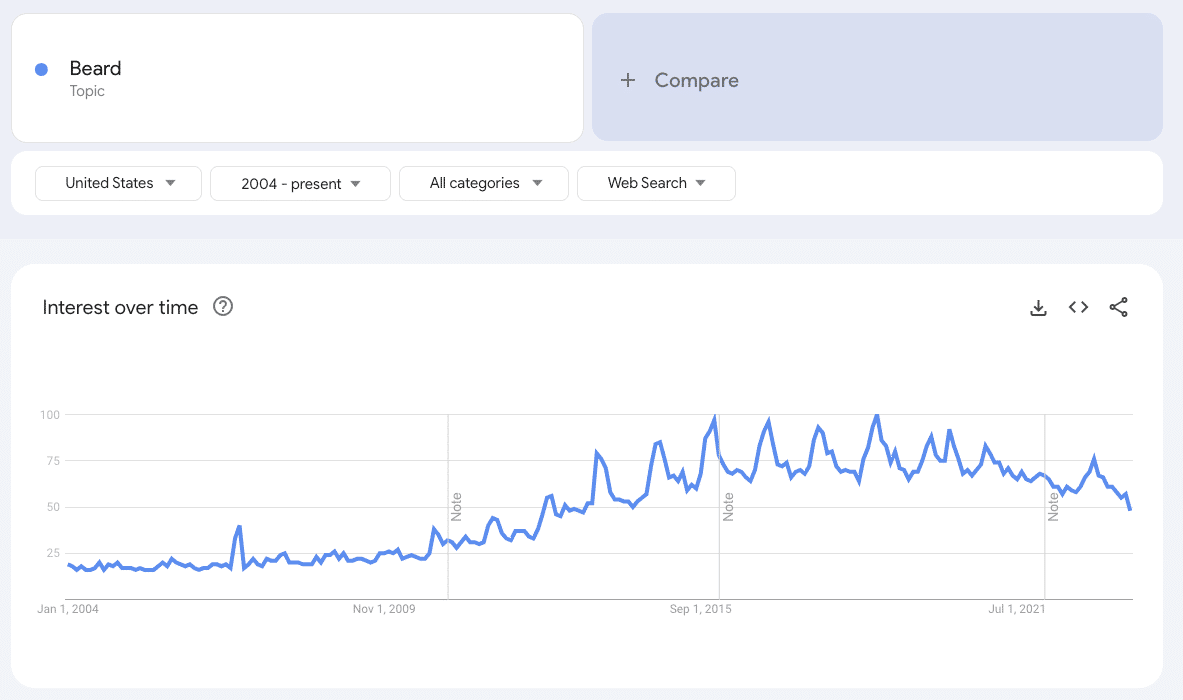
But why?
Beard Culture Shift
Now, aside from the data, let’s also consider the possible cultural shifts that might have led to this decline.
The ‘Hipster’ Movement
It’s hard to deny that the rise of the ‘hipster’ movement had a huge influence on the popularity of beards. The lumberjack aesthetic, complete with a full beard, flannel shirts, and artisanal coffee, held sway over popular culture for several years.
By 2015, the image of a bearded man holding an IPA and discussing his latest vinyl acquisition was firmly embedded in the public imagination. However, like all trends, the hipster beard eventually fell out of favor:
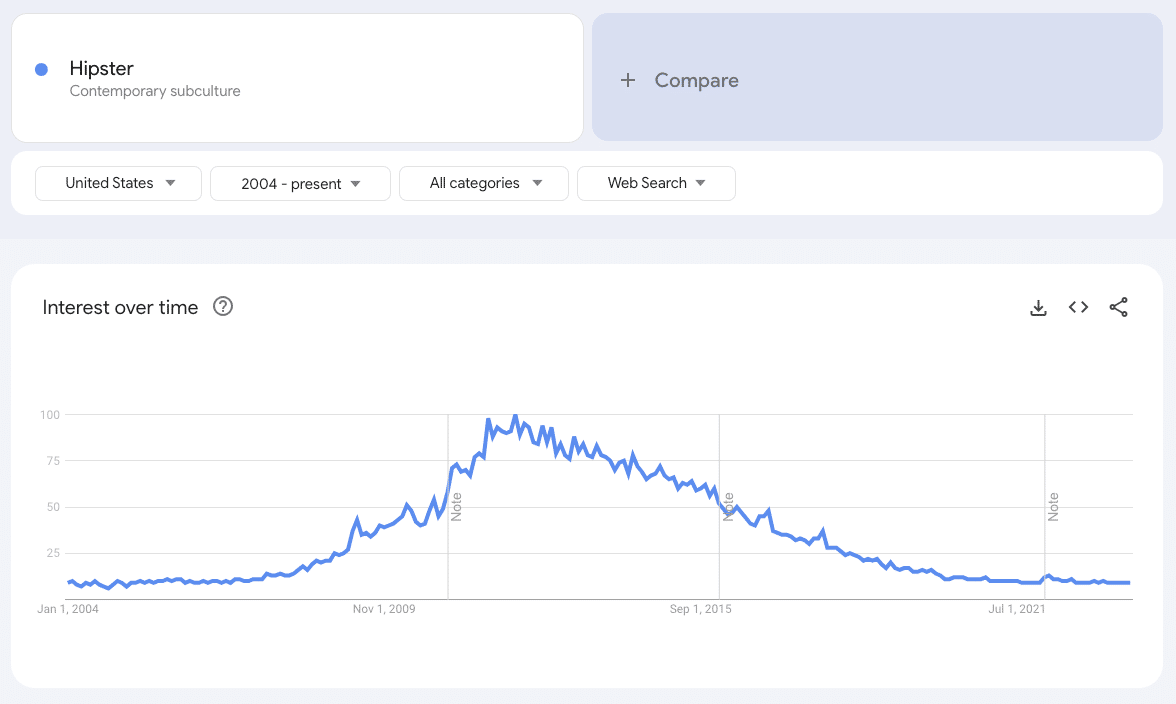
It started becoming less of an individualistic statement and more of a cliché, leading to a decline in its popularity.
Mask Wearing Due to Covid-19
Another possible factor is the onset of the Covid-19 pandemic, which led to widespread changes in grooming habits. Many people found themselves working from home, leading to a rise in casual, comfortable fashion and a decline in more structured, formal looks.
What’s more, mask-wearing regulations made sporting a full beard somewhat challenging.
While we won’t touch the political dynamic of this discussion with a 10′ pole, we can simply look at it practically: masks often don’t fit well over full beards. Straps can get caught in facial hair, making it uncomfortable to wear. Additionally, the health concerns around the virus may have encouraged men to prioritize mask efficacy over maintaining their beard.
The Center for Disease Control and Prevention (CDC), in fact, put out a whole infographic on how to manage your beard style to get an optimal fit for your mask – they explicitly recommended a clean-shaven face as the best option to create a tight seal. This could have led to a significant number of men cutting back their beards or shaving completely to comply with this guidance, further contributing to the decline in beard popularity and care.
The Skin Care Boom
The rise of skincare as a major concern, particularly among millennial and Gen Z men, has also played a part in this shift. The skincare industry has seen tremendous growth over the past few years.
With this newfound focus on skincare, men are taking a more holistic approach to their grooming and are not just focusing on beards.
Rather than just ‘letting it go’ men may be more inclined to focus on their skin, and perhaps even shave more often, to showcase a clean, healthy complexion.
Aesthetic Preference
Another factor worth considering is the change in aesthetic preferences. As society progresses, so do our standards and preferences for beauty and appearance. The rugged, unkempt look associated with full beards has given way to a cleaner, more groomed appearance.
In a research article in the Journal of Evolutionary Biology from August 2016, the authors found that women rated facial hair as attractive for long-term relationships, while pronounced brow ridge and jawline for short-term relationships.
However, this is likely culturally influenced, as the study was conducted in Australia, where the beard trend was still going strong at the time.
Beard Care Companies
Confirming what Mr. Bandholz stated about his own company, Beardbrand, a cursory look at some other names in the beard care industry reveals a similar trend.
Firing up Google Trends again we can observe a decline in search interest in Beardbrand, Honest Amish, and to a lesser extent, The Bearded Bastard, and Wild Willies:

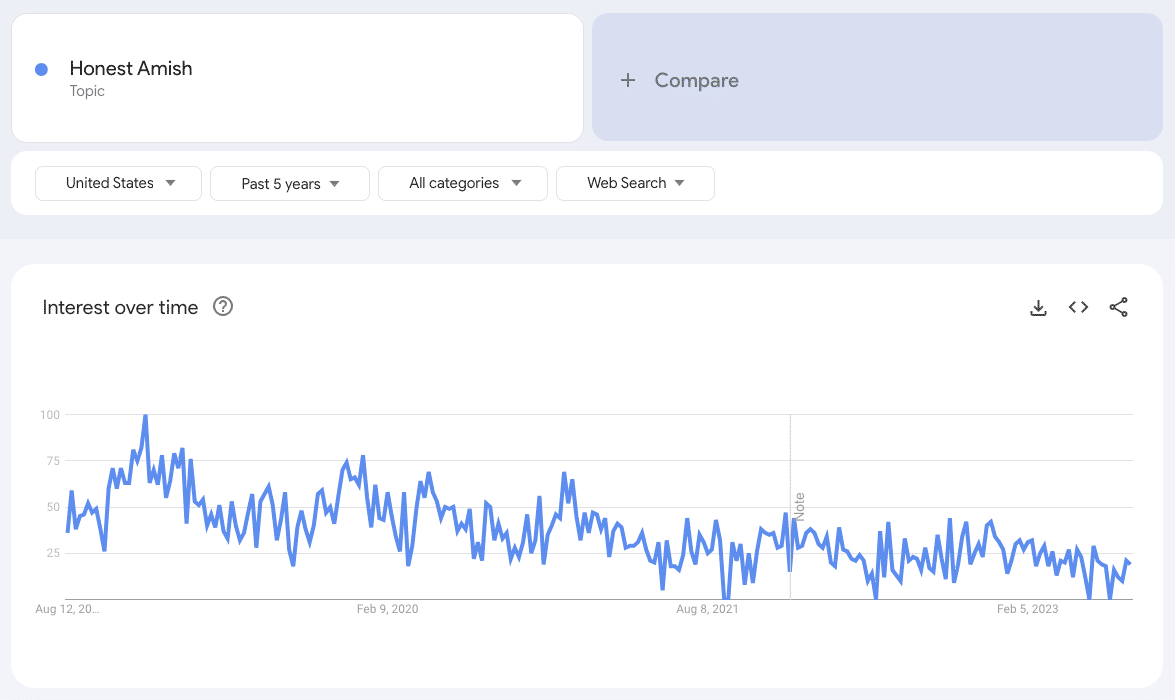
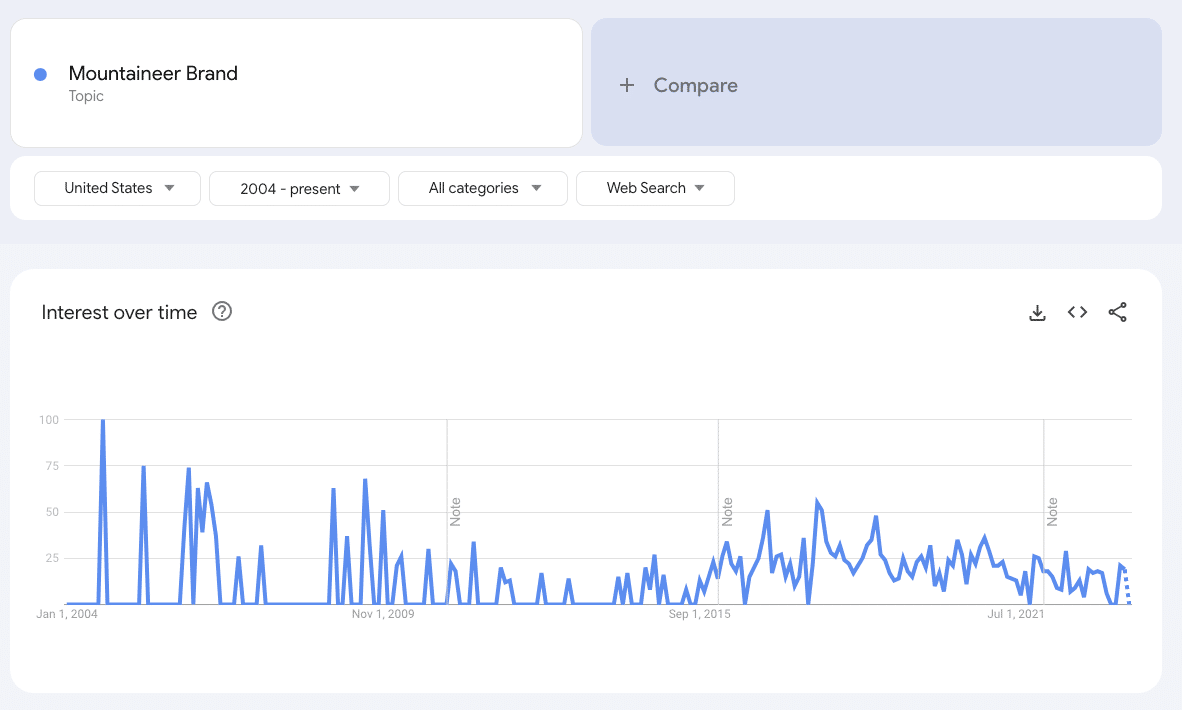
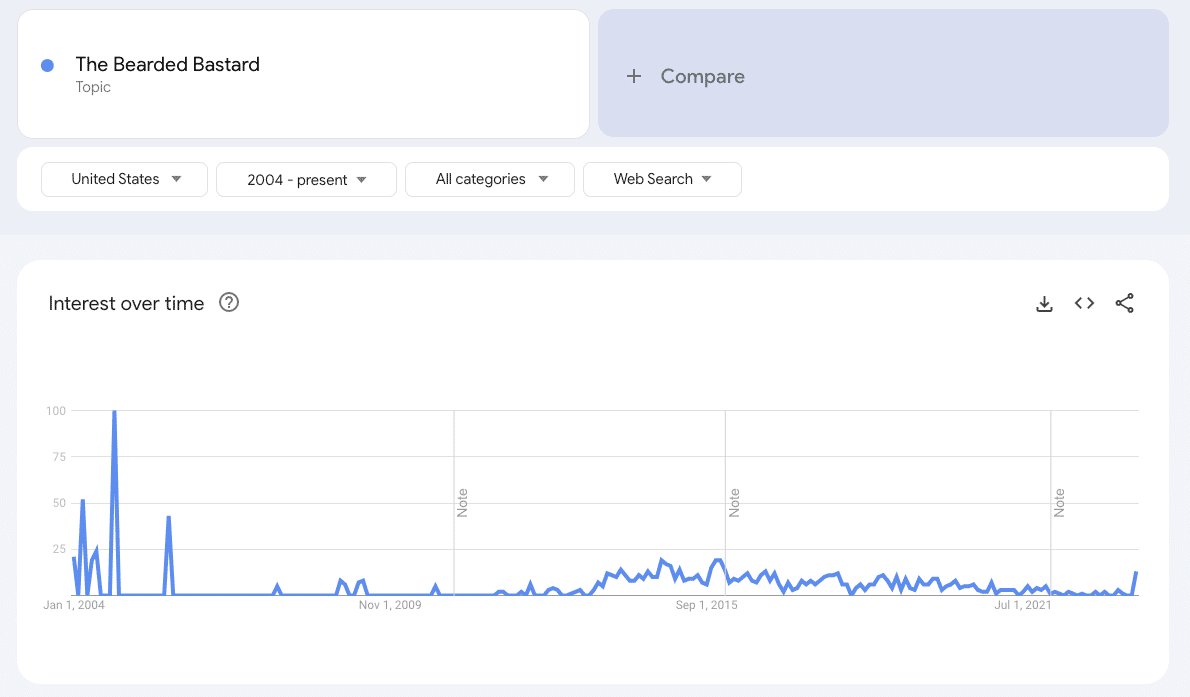
Ultimately, all these charts suggest a decrease in consumer interest in the bearded lifestyle and related products over time.
Note: I tried to get data on other beard care companies but there wasn’t enough data to generate a trend chart, suggesting significantly low search interest in these brands.
While these graphs only represent search interest and not sales, the two often correlate. When people are interested in something, they tend to search for it online, and these searches often lead to purchases. Therefore, it’s reasonable to deduce that the decline in search interest probably indicates a decrease in the sales of beard care products as well.
But what isn’t mentioned here is the number entrants into this category over time. Beard products weren’t really a thing 15 years or so ago. However, now you have massive companies like Gillette, Old Spice, and many others entering the beard care market. So while overall interest may have declined, it’s also possible that the market has simply become more saturated, leading to a dispersion of sales across more brands.
Will the Beard Get a Booster Shot?
Let’s be real – the beard isn’t going anywhere. They are a masculine symbol deeply rooted in our history and culture. However, the beard’s popularity and the demand for beard care products can wax and wane depending on a variety of factors as we have discussed above.
Just like the mustache of the 70s and 80s, the beard is simply going through a period of diminished popularity. Refreshingly, the conversations around facial hair are evolving and becoming more nuanced. Men today are likely more in tune with their own personal style and grooming preferences than previous generations, and this individuality is taking precedence over following a trend.
But don’t count the beard out – at least not yet. As with most fashion trends, styles often operate on a cycle, with certain looks falling out of favor only to experience a resurgence years, or even decades, later.
Future Predictions
Looking toward the future, I think stubble and mustaches are the new facial hair trends to watch. Stubble provides the perfect middle ground between clean-shaven and bearded looks. They also rank high on the attractiveness scale.
Mustaches, on the other hand, are making a comeback thanks to popular culture. Shows like “Narcos” have given the mustache a fresh, edgy image that has made it appealing to the younger generation. Celebrities like Henry Cavill and Sam Elliott have also sported mustaches, further adding to its popularity.
Regardless of your facial hair style of choice – be it a full beard, stubble, or a mustache – the most important thing is to own it. Wear it with confidence and pride, and you’ll always look your best.